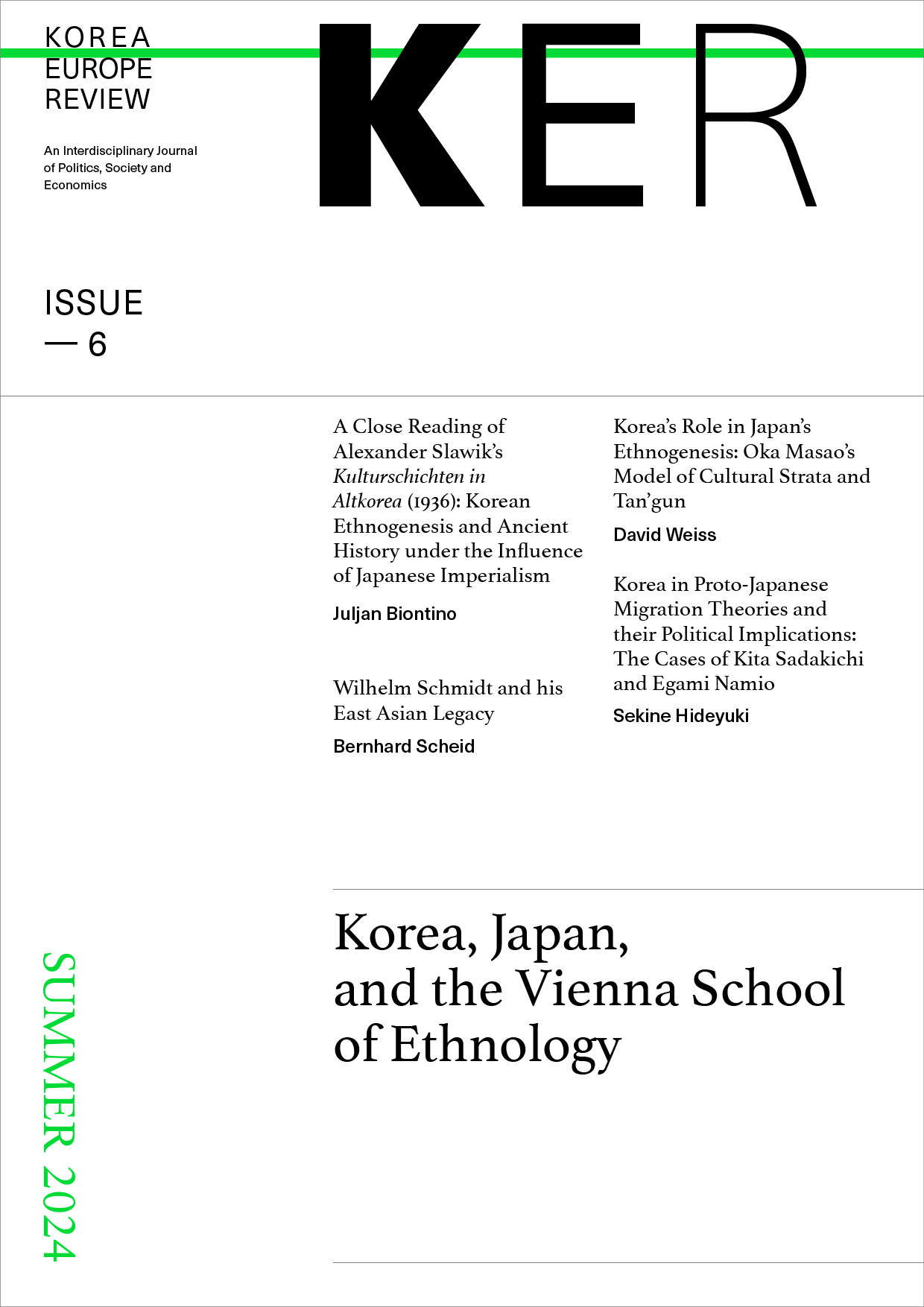Korea’s Role in Japan’s Ethnogenesis
Oka Masao’s Model of Cultural Strata and Tan’gun
DOI:
https://doi.org/10.48770/ker.2024.no6.43Keywords:
Oka Masao, ethnology, Tan’gun, ethnogenesis, theory of culture circles (Kulturkreislehre)Abstract
Oka Masao (1898–1982), a pioneer of Japanese ethnology, studied in Vienna, where he encountered the diffusionist theory of culture circles. This inspired him to write a dissertation combining concepts of the culture circle theory with his knowledge of Japanese folklore studies and prehistory to create a model of Japanese ethnogenesis. The originality of this approach becomes apparent when contrasting Oka’s interpretation of the Tan’gun myth with politically inspired studies of his contemporaries. The framework of culture circles allowed Oka to emphasize the parity and interconnectedness of early Korean and Japanese cultures. During the war, Oka conducted “ethnic studies” to support colonial policies. However, after the war he returned to the ethnohistorical topics of his Viennese dissertation, which helped to overcome the emperor-centred wartime ideology and to correct chauvinist views of Korea in Japan. This article contextualizes this contradictory figure and his work with a special focus on his perception of Korea.

Downloads
Published
How to Cite
Issue
Section
License
Copyright (c) 2024 David Weiss

This work is licensed under a Creative Commons Attribution 4.0 International License.


